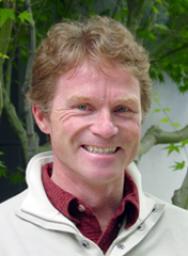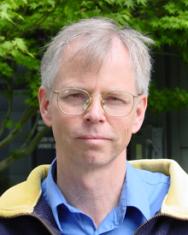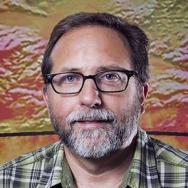Dr. Anders Petersson (Principal Investigator) holds a Ph.D. in numerical analysis from the Royal Institute of Technology in Stockholm, as well as a "Docent" degree (D.Sc.) in fluid mechanics from Chalmers University of Technology in Gothenburg, Sweden. He specializes in finite difference methods for wave propagation problems. He has worked on overlapping grid and embedded boundary methods, both for the scalar wave equation and Euler's equations of compressible gas dynamics. More recently, his focus has been on finite difference methods for the elastic and viscoelastic wave equations in second order formulation, where he has developed energy stable discretizations for curvilinear and Cartesian meshes with mesh refinement boundaries. Furthermore, together with H.-O. Kreiss and O. Ortiz, he has developed a stability theory for hyperbolic systems in second order formulation.
Dr. Bjorn Sjogreen holds a Ph.D. and a D.Sc. degree in numerical analysis from Uppsala University in Sweden. Dr. Sjogreen is an expert in numerical methods for hyperbolic problems, such as compressible gas dynamics, shoch waves, detonation waves, and viscous flows with small scales. During the last six years, he has also worked on finite difference methods for elastic and viscoelastic wave propagation in solids. Furthermore, Dr. Sjogreen has experience with embedded and overlapping grid systems, and has worked on the stability of grid to grid interpolation. His research has been focused on efficient methods, both algorithmically by use of higher order schemes, and implementationally by use of large scale parallel computers.
Dr. Arthur Rodgers is a seismologist in the Atmospheric, Earth and Energy division at LLNL. Dr. Rodgers specializes in wave propagation in the earth due to earthquakes or human-made explosions. Dr. Rodgers has worked on several verification and validation studies, where the WPP code were compared to seismographical measurements and results from other codes. He recently used WPP to study the influence of shear wave generation due to topographical effects.
Former Team Members
Heinz-Otto Kreiss | Prof. Kreiss was a consultant on the Serpentine project and contributed on advanced stability and accuracy issues. He was one of the forefathers of numerical analysis and has worked on many aspects of the field. He is perhaps best known for his stability theory (e.g. the Kreiss Matrix theorem) concerning the stability of hyperbolic initial-boundary value problems. He was the first to analyze and advocate the benefits of higher order accurate numerical methods for wave propagation problems. Forty years ago, he introduced the concept of "grid points per wave length", which by now is widely used in many applications.
Caroline Bono | Dr. Caroline Bono was a computer scientist in the applied mathematics group at the Center for Applied Scientific Computing (CASC) at LLNL. Dr. Bono helped implement a large part of version 2.0 of WPP. She now works at the French energy research laboratory EDF.
Daniel Appelo | Dr. Daniel Appelo was a post-doctoral fellow in the CASC applied mathematics group at LLNL. Among many other accomplishments, Dr. Appelo developed the energy conserving method for solving the elastic wave equation on curvilinear meshes. He is currently a professor of Mathematics at the University of New Mexico in Albuquerque.
Kathleen McCandless | Kathleen McCandless is a computer scientist in the Computing directorate at LLNL. She was responsible for the software engineering and code infrastructure in early versions of WPP. She currently works at the National Ignition Facility (NIF) project at LLNL.
Stefan Nilsson | Dr. Stefan Nilsson was a post-doctoral fellow in the CASC applied mathematics group at LLNL. Dr. Nilsson was heavily involved in the initial design of the WPP software, focusing in particular on parallelization issues. Dr. Nilsson currently works at the research branch of SKF in Sweden.
Hrvoje Tkalcic | Dr. Hrvoje Tkalcic was a post-doctoral fellow working with seismologists in the Energy and Environment directorate at Lawrence Livermore National Lab. Dr. Tkalcic worked on verification studies where results from WPP was compared to the code E3D, as well as on the validation issues related to various aspects of the performance of WPP. He currently works as a seismologist in Australia.
Stephen Blair | Dr. Stephen Blair has worked on geological and geophysical projects at LLNL for over 20 years. His work has focused primarily on the measurement and modeling of rock behavior in the subsurface. Dr. Blair used WPP to perform seismic simulations in the vicinity of the Nevada test site. Dr. Blair retired from LLNL in 2007.



